A Guide for Wedding Photographers
I love all the different traditions I get to experience as a Mobile Alabama wedding photographer. As a Catholic, I especially love when I get to photograph a Catholic wedding. For photographers who aren’t Catholic, the Catholic wedding can be a brand new experience. If the bride and groom choose to celebrate with a Nuptial Mass, it can seem a bit intimidating when you find out the ceremony will be at least an hour long. Many photographers who aren’t familiar with Catholic traditions aren’t sure about what is going on during different parts of the Mass. It seems mysterious and you might find yourself wondering what will happen next. Knowing what will happen during a Catholic wedding means that you’ll be better able to document those moments, ensuring you don’t miss something that the couple would consider special.
I’ve been asked many times about the different aspects of the Mass when working with various photographers. What’s happening during this part? When will they do the vows? How much time is left? I don’t mind these questions at all, but it is often hard to fully explain while the Mass is going on. Have you ever photographed a Catholic wedding and felt a bit lost? If so, this post is for you! This is my guide for photographing Catholic weddings.

All the photos in this post are from Liz and Paul’s wedding. I think it’s helpful to see the traditions through one wedding instead of photos from various different Catholic wedding ceremonies. Liz and Paul had a very special Nuptial Mass last month in Mobile, Alabama. Their ceremony was unique because Liz’s brother, Joe, is currently in the seminary. He was ordained a Deacon ahead of their wedding, which meant he was able to assist the Priest with the Nuptial Mass. Deacon Joe was able to deliver the homily (a.k.a. the sermon) and be part of administering the Rite of Marriage. The Rite of Marriage refers to the portion of the Nuptial Mass where the bride and groom exchange vows and rings. In the Catholic church, only a Priest or a Deacon may administer marriage vows. It’s not every day that a bride is able to have a relative serve this role at her wedding. This was a very special moment for Liz and Paul, as well as for their families. Deacon Joe’s homily was one of the most beautiful homilies I’ve ever heard at a wedding. I really hope someone recorded it for them!
So, what can you expect at a Catholic wedding? The good news is there is a standard format and once you photograph a handful of Catholic wedding ceremonies, you’ll be able to anticipate what’s going to happen next. The most important thing to remember is that all parts of the ceremony are important to the couple who are getting married. Read on for the breakdown of what to expect for Catholic wedding ceremonies.
THE PROCESSIONAL
The processional is the same for Catholic weddings (both those with a Mass and those without) as it is for most any other type of wedding ceremony. The grandmothers and mothers of the bride and groom are seated prior to the bridal party processing down the aisle. There are generally no surprises here, although where the celebrant (the priest or deacon) processes from may differ from church to church. In some churches, the celebrant will enter the sanctuary from the area behind the altar, while in other churches the priest will process down the aisle ahead of the bridal party. I most often see celebrants enter from behind the altar in the older churches. If you’re at a church with modern architecture, the celebrant will most likely process down the aisle behind the groom.

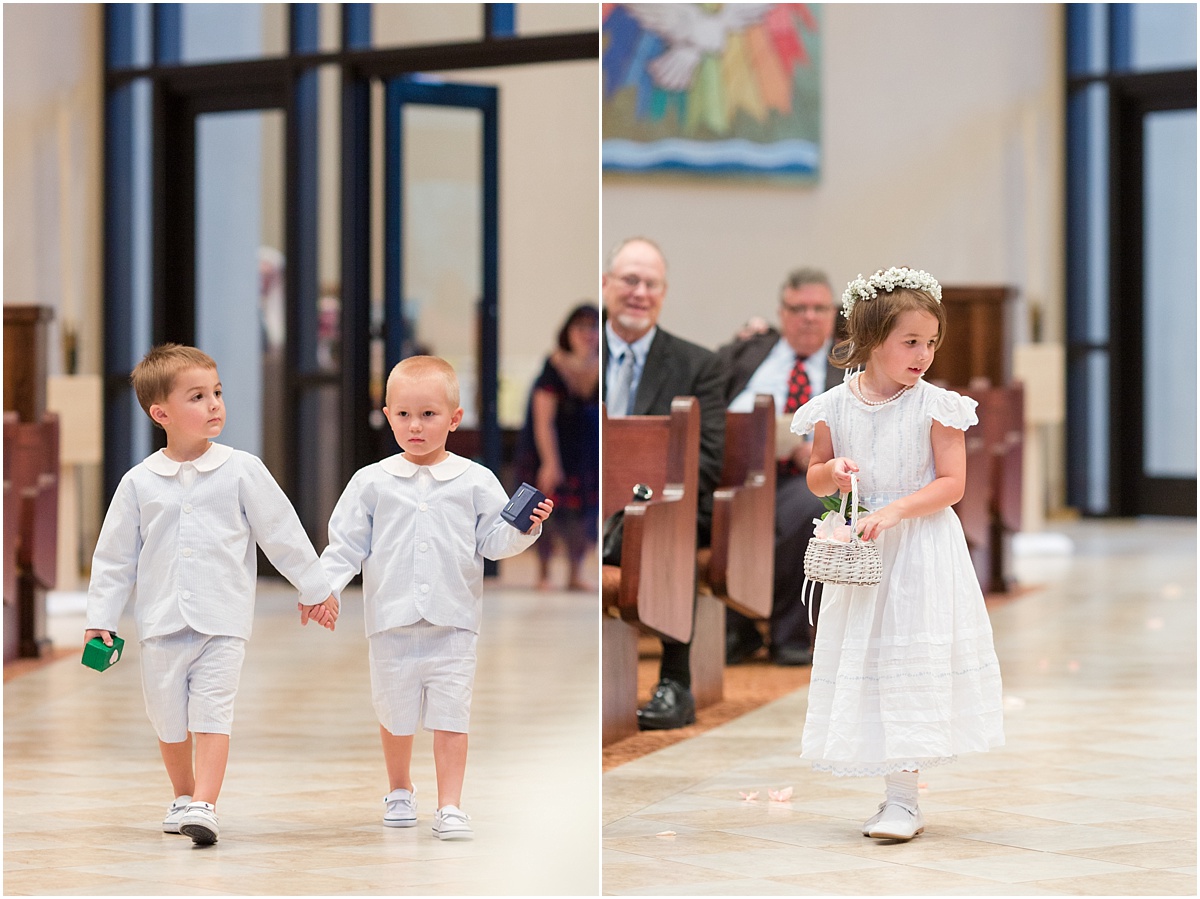
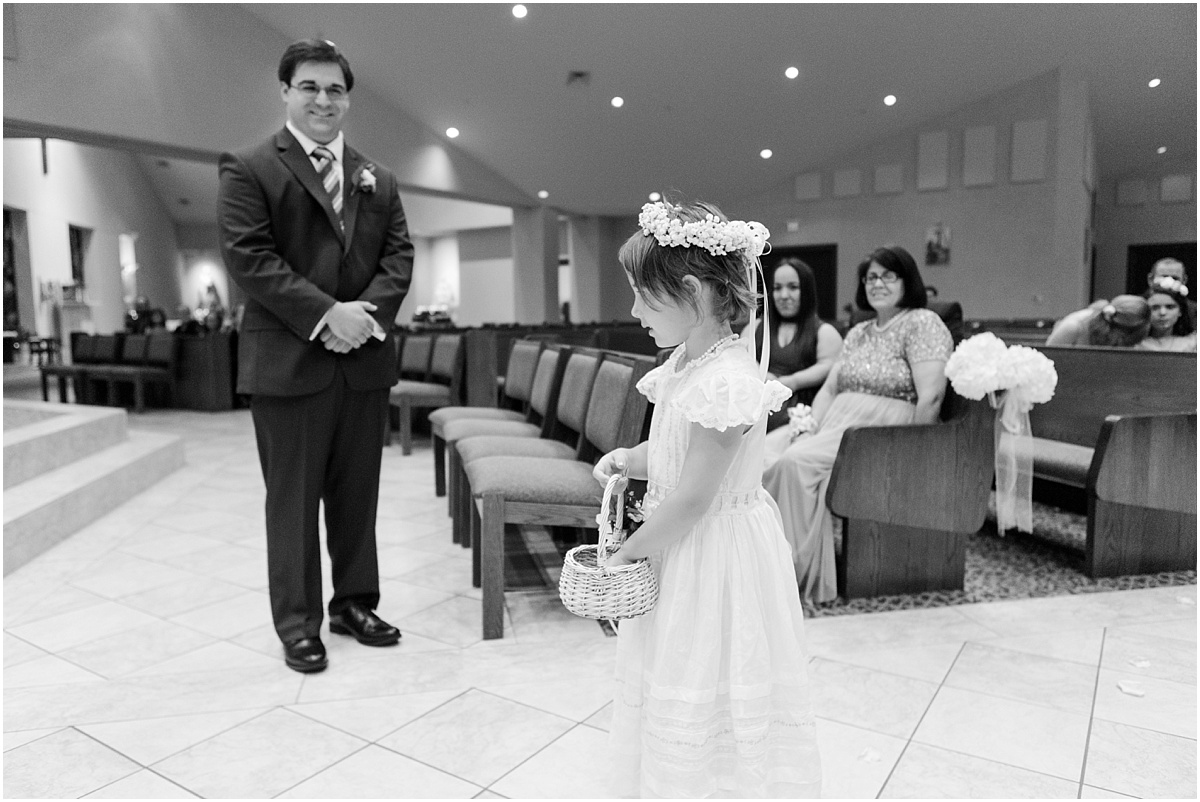
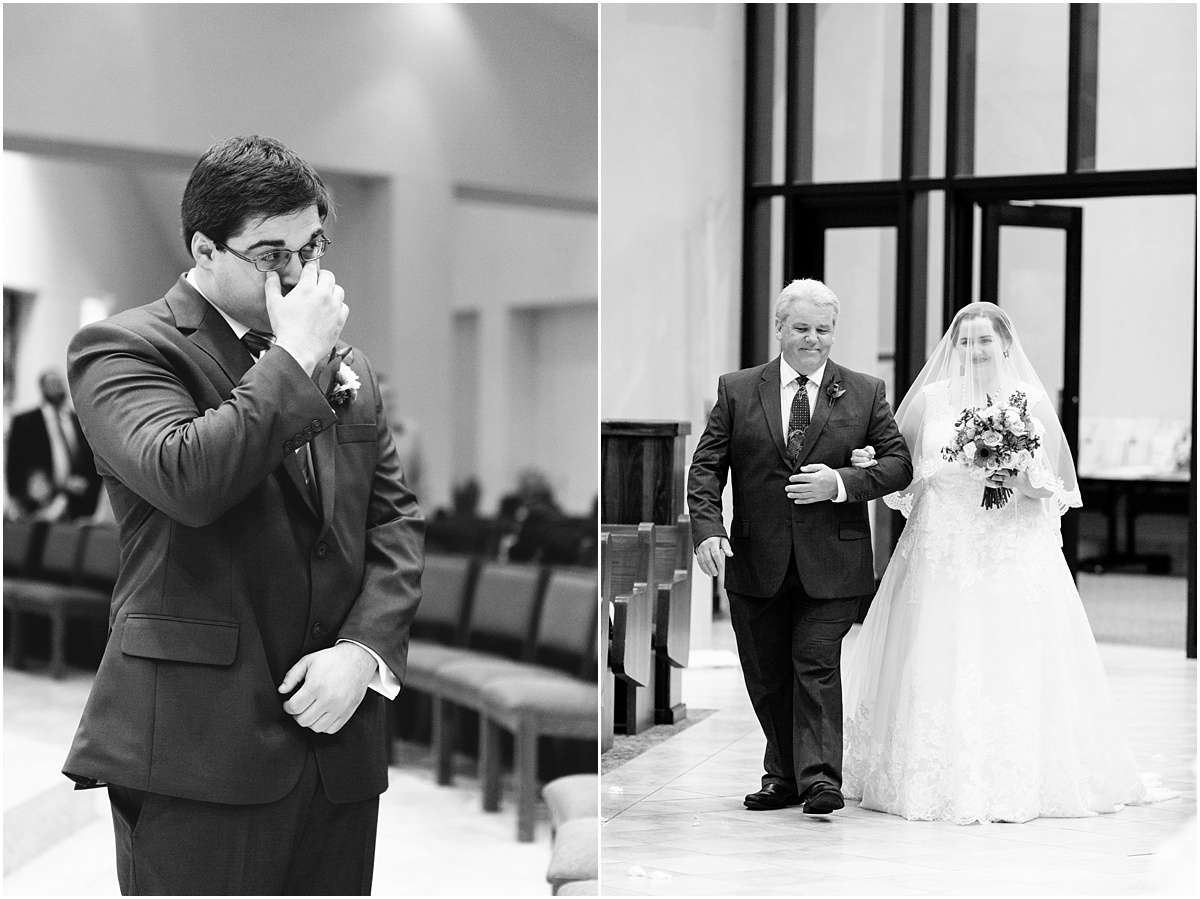
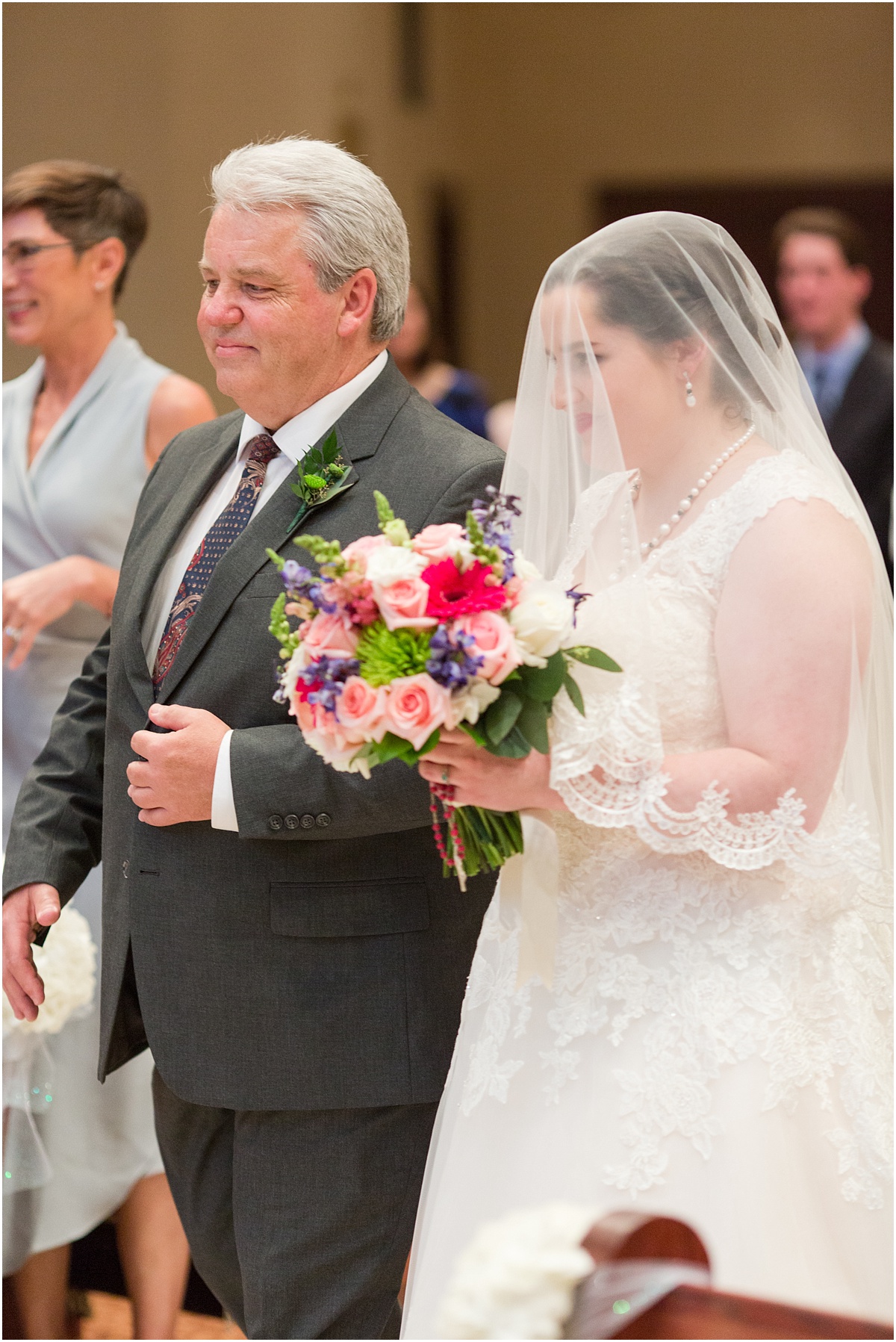

THE LITURGY OF THE WORD
All Catholic weddings include readings from scripture. After the processional, the celebrant will begin the ceremony by greeting the attendants and saying an opening prayer. Then the congregation will be seated for the readings. There will be a First Reading (from the Old Testament), the singing of a psalm and a Second Reading (from the NewTestament). The congregation will stay seated for these two readings and the psalm. After the Second Reading, the congregation will stand for the Gospel Acclamation. During this time, everyone sings the Alleluia and then remains standing for the Gospel reading.
The congregation will sit during the homily. It is important to most Catholic brides and grooms to have photos of those doing the readings, as well as the priest/deacon when he is giving the homily. The bride and groom are usually seated where they can see the congregation and the pulpit during this portion of the ceremony, so it is also a good opportunity to photograph them taking in the moment.



I loved that Deacon Joe stood before Liz and Paul instead of behind the pulpit to deliver his homily.

Liz’s parents will certainly treasure this moment! If there is an empty pew to the far side of a church, I love to grab a seat during the homily so that I can take a photo of the parents taking in the moments of the ceremony.

THE RITE OF MARRIAGE – VOWS & RINGS
After the homily, the celebrant will invite the bridal party to return to the sanctuary to stand alongside the bride and groom for the vows and the exchange of rings. This portion of the ceremony holds no surprises. However, be on guard for the kiss right after the exchange of rings. Some celebrants prompt the bride and groom to kiss right after the rings have been exchanged, while others save the kiss for the end of the ceremony.
If the couple elected to not have a Nuptial Mass, then the ceremony will move forward with Prayers of the Faithful (special intentions) and The Lord’s Prayer. After the Lord’s Prayer, the celebrant will give the Nuptial Blessing before concluding the ceremony. After a final blessing for the congregation and the dismissal, the recessional will begin. If, however, the couple is having a Nuptial Mass, the ceremony will continue with The Liturgy of the Eucharist after the Prayers of the Faithful.

THE LITURGY OF THE EUCHARIST
The Liturgy of the Eucharist begins with the Presentation of the Gifts. Bread and wine are brought forth to the altar, usually by two or three people who have been selected specifically for this role by the bride and groom. I always try to get a photograph of the three “gift bearers” while they are lined up at the back of the aisle and when they present the gifts to the bride, groom and celebrant at the altar. Those chosen for this role are usually family members or very close friends of the bride and groom.

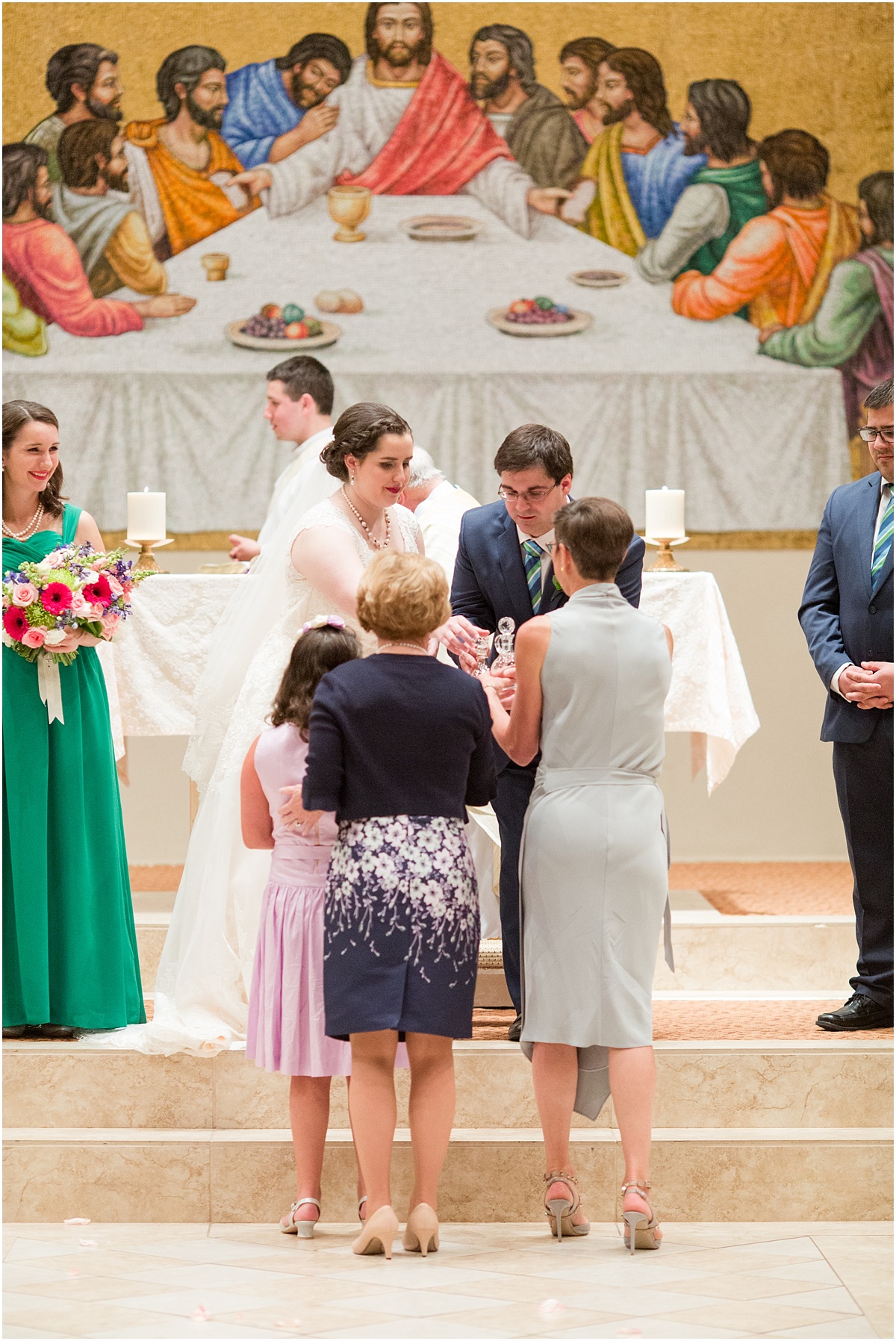
Many people refer to The Liturgy of the Eucharist as Communion, but Communion is only one part of the Liturgy of the Eucharist. Key moments to photograph during this time are the bride and groom kneeling before the altar, as well as photographs during The Lord’s Prayer and The Nuptial Blessing. After The Lord’s Prayer, the congregation will exchange the Sign of Peace (with everyone shaking hands with those seated around them). Be on the lookout for the bride and groom to depart the sanctuary during this moment to greet their parents, or for them exchanging the Sign of Peace with the celebrant. This moment will vary from wedding to wedding.


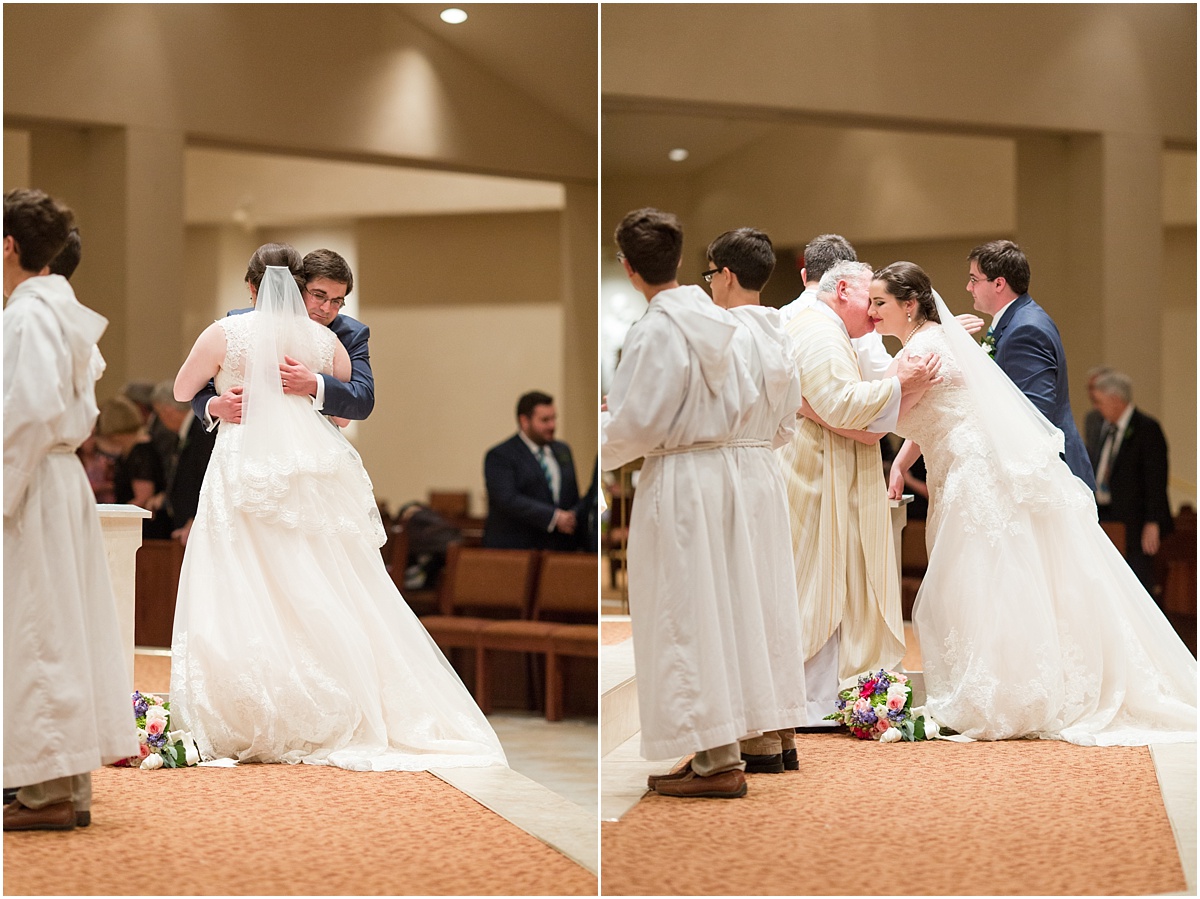
I always try to be discreet when photographing ceremonies, but especially during the Liturgy of the Eucharist. Everyone will be kneeling down for most of this portion of the Mass, so it makes your movements more noticeable. I like to stay at the back of the church, or to the far side during this potion of the Mass. I always make sure my shutter is on the silent mode and I am cautious to take photographs only of key moments so as to not disturb those participating in the Liturgy.

During Communion, those Catholics in attendance for the Mass will go up to the front of the church to receive Holy Communion. At this point, it’s time to think about the end of the ceremony and the kiss if it has not yet happened.

THE CONCLUDING RITE
After The Liturgy of the Eucharist, the priest will give a final blessing. And here’s when it gets tricky and can vary from region to region. In the Archdiocese of Mobile, we are not allowed to take posed photographs inside the church before or after the ceremony. The only photographs that may be taken are candid photographs during the actual ceremony. Therefore, the celebrant gives an opportunity for a photograph to be taken of the bridal party prior to the recessional.
Sometimes the celebrant will announce a photo is being taken and will ask the congregation to be seated for a moment (this is the most ideal scenario!). Other times, the celebrant will have the couple kiss and then they will pose for the photo without there being an announcement. And then you have the occasional situation of the celebrant forgetting about the group photo and the kiss altogether and it’s a total guessing game as to what is going to happen next. I always prepare for the kiss to happen before the group photo. If they switch to the group photo, I quickly change a lens, or zoom out, and grab that shot.
Most celebrants will wait for you to give some sort of cue that you’ve gotten the group photo before preceding. However, some will only give you a split second, so be prepared. I always let my couples know that the group photo at the end of the ceremony is the trickiest shot to get. It’s helpful if you remind the bridal party during portrait time to remember to squeeze in so that you can get everyone in the shot (this is especially helpful if there is not much distance between the sanctuary and the first row of pews and the celebrant does not ask the congregation to sit down).

At Catholic weddings, the kiss is not always announced, so keep an eye on the bride and groom. Many times they will kiss without warning. Other times, the celebrant will say, “I now introduce for the first time Mr. & Mrs….” and that is the cue for the kiss.

THE RECESSIONAL
The recessional holds no surprises, but if the celebrant recesses down the aisle behind the bridal party, this is a good time to grab a photo of them with the bride and groom. The priest does not always recess down the aisle, so this shot is not one you can always get, but it is definitely nice for the couple to have whenever possible. If I know the celebrant will attend the reception, I usually make a note to try to get a photo of him with the bride and groom during that time.



SPECIAL TRADITIONS
While the Nuptial Mass is a standard format for all Catholic weddings, there are a few optional traditions that may be incorporated into the ceremony by the bride and groom.
A favorite of many couples is to take a moment after The Liturgy of the Eucharist and before the Concluding Rite to offer prayers to Mary. This is usually done while a special hymn is sung, often Ave Maria, or other reflective hymn. The couple will typically lay flowers before a statue of Mary and silently pray during the hymn before returning to the center of the sanctuary. By laying flowers before Mary during this type of devotion, the bride and groom are asking Mary to pray for them as they begin their new life together as husband and wife.
The Unity Candle is also a favorite among Catholic brides and grooms. If having a Unity Candle at the church, most brides and grooms will light it after The Rite of Marriage, but before the Liturgy of the Eucharist begins.

ETIQUETTE & LINGO
1. Greet the Celebrant
I always like to greet the celebrant before any wedding, but especially at Catholic weddings. Even though I am Catholic and know many priests in my hometown, I don’t know them all and I certainly want to make sure the celebrant knows BEFORE the ceremony begins that I will be both discreet and respectful. I often tell them exactly where I will be for the processional and then I make sure that is ok with them. Some celebrants will have certain preferences, so just because something was ok with one celebrant doesn’t mean it will be ok with another.
I once had a priest ask me to not use my flash in a very dark church (so dark that my camera could barely focus without my flash turned on). I asked if I could use it for only the processional, vows, group photo and recessional and I was given permission to use my flash during those times. Bottom line, that priest didn’t want a flash being a distraction during the Liturgy of the Word and the Liturgy of the Eucharist. I of course respected his wishes. I’ve photographed many Catholic weddings and I was only asked to not use my flash this one time, but I sure am glad I talked to the priest beforehand so that I knew of his preference.
2. Don’t Enter the Sanctuary (the elevated area where the altar sits)
This may seem like an obvious rule to some, but it may not seem so to others. As a general rule, you don’t want to go past the first row of pews where the congregation is seated. I always try to stay to the back, or hide myself behind a column if I move to the far side of the church. If you greet the celebrant prior to the ceremony, they will likely inform you of this rule. If they do, reassure them that you will not go up the steps into the area where the altar sits and for heaven’s sake don’t ever try to break this rule. This is not one of those “ask for forgiveness not permission moments” because going up the steps towards the altar is something that most in attendance at a Catholic wedding would find distasteful and offensive.
3. Dress Appropriately
There is a formality to a Catholic wedding ceremony and you want to make sure that you’re dressed appropriately. I am a firm believer in working a wedding in something that you’re comfortable in, but keep in mind the setting for the wedding. I’ve heard so many stories about photographers being inappropriately attired at Catholic weddings and it makes me sad. Keep in mind that for Catholics the church is a sacred place and you should dress accordingly as a sign of respect. Not sure what will be appropriate for a Catholic wedding? Ask a fellow photographer who has photographed several Catholic weddings, or your bride and groom.
4. Review the Program
The program is your best friend at a Catholic wedding. If you’re not familiar with the Order of the Mass, then the program will guide you through what will happen. I like to have 30 minutes of ceremony prep time ahead of the wedding. Even though I am Catholic, I still like to review the program to see if there are any special traditions being incorporated so that I can be prepared to capture them.
5. Helpful Lingo – What do all these words mean?
Nuptial Mass – The wedding ceremony is part of a Mass and will last approximately one hour.
Rite of Marriage – The Exchange of Vows & Blessing of the Rings
Celebrant – The priest or deacon who will marry the bride and groom.
Gift Bearers – Those who will bring up the gifts of bread and wine to the altar. Typically two or three people will fulfill this role.
Eucharistic Ministers – Those who assist the celebrant with giving Holy Communion to the congregation. Not all weddings have Eucharistic Ministers, but if people from the congregation go up to help the celebrant give out Communion, then they have likely been specially selected for this role.
Altar Servers – Usually, young boys or girls who assist the celebrant during the ceremony. Sometimes the altar servers are provided by the church and sometimes they are specially selected for the role by the bride and groom. I am not always able to get a photo of the bride and groom with the altar servers due to logistics. If they are relatives or close friends of the bride and groom, I try to make sure I get photos of them during the Mass.
Homily – The sermon given by the celebrant after the Gospel reading.
Sanctuary – The elevated area inside the church where the altar, pulpit and priest’s chair are positioned. Usually, steps separate the sanctuary from the rest of the church.
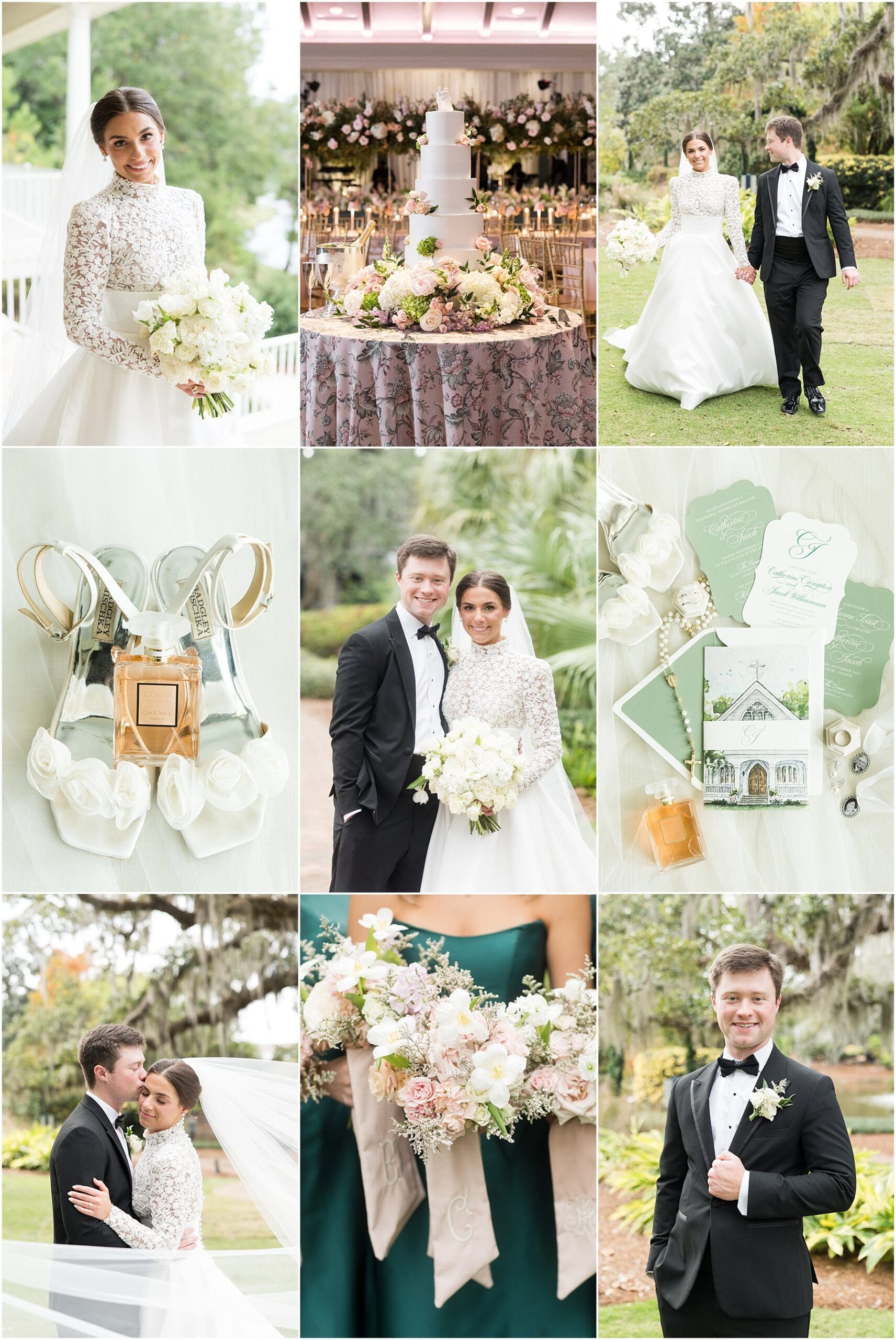
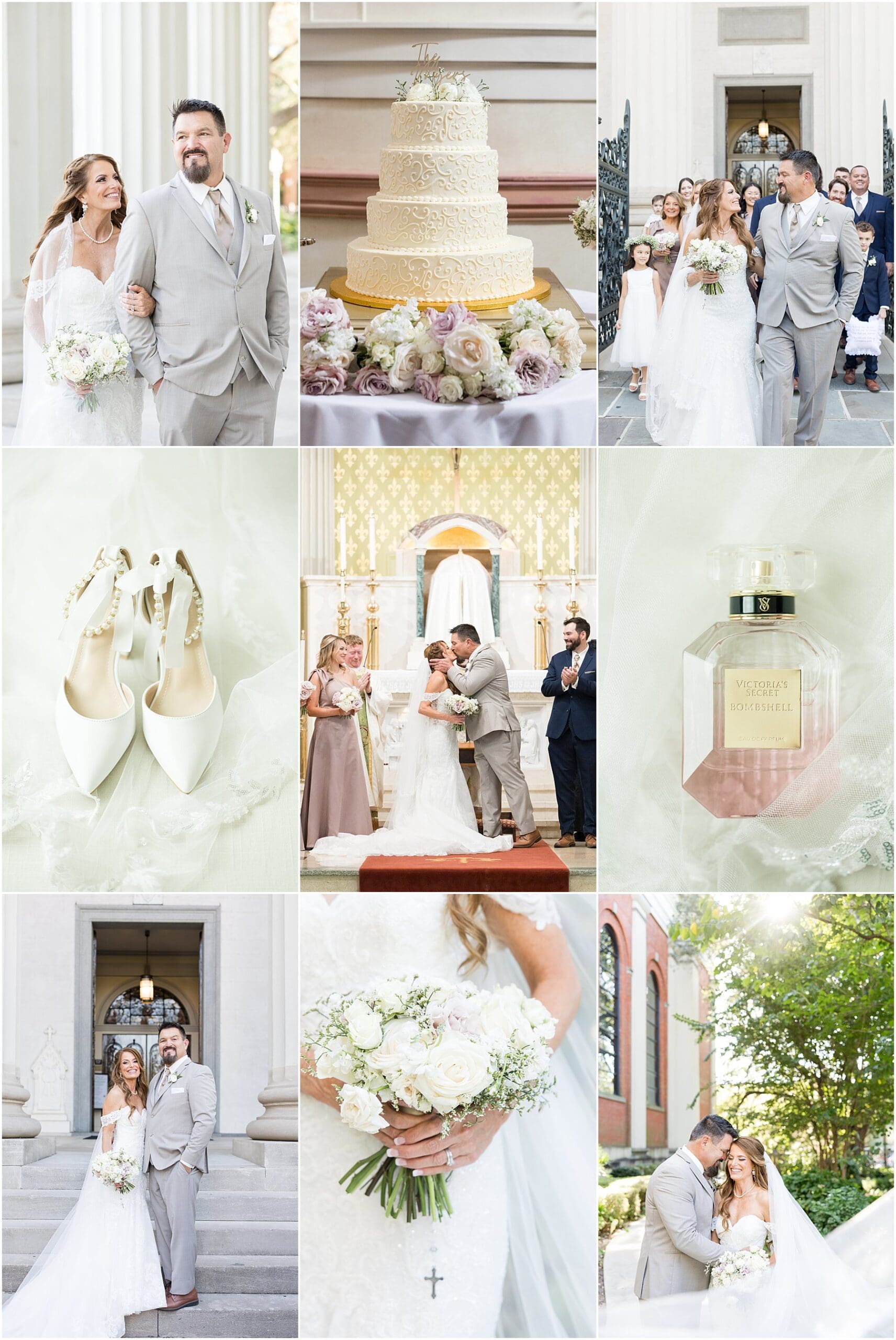

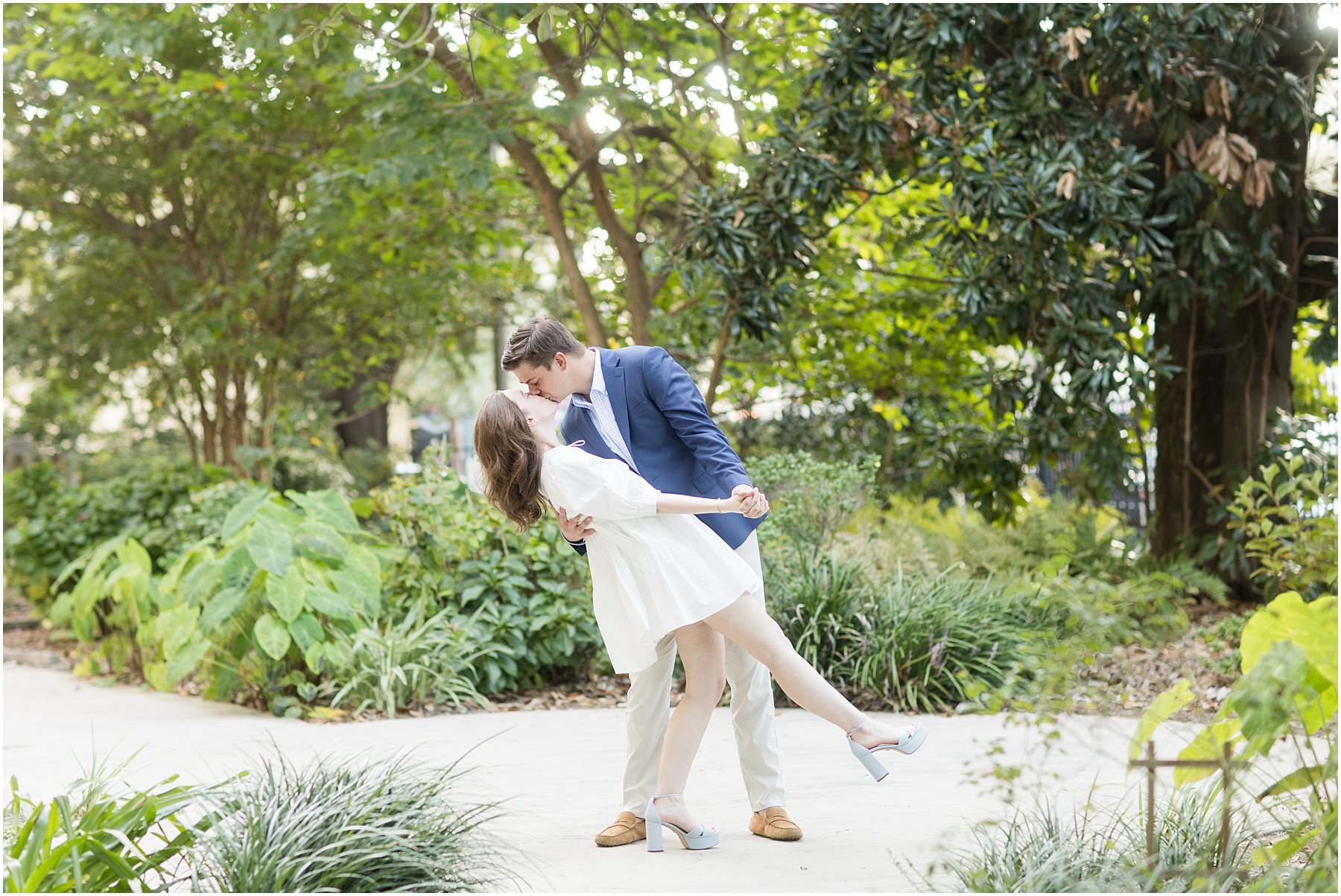
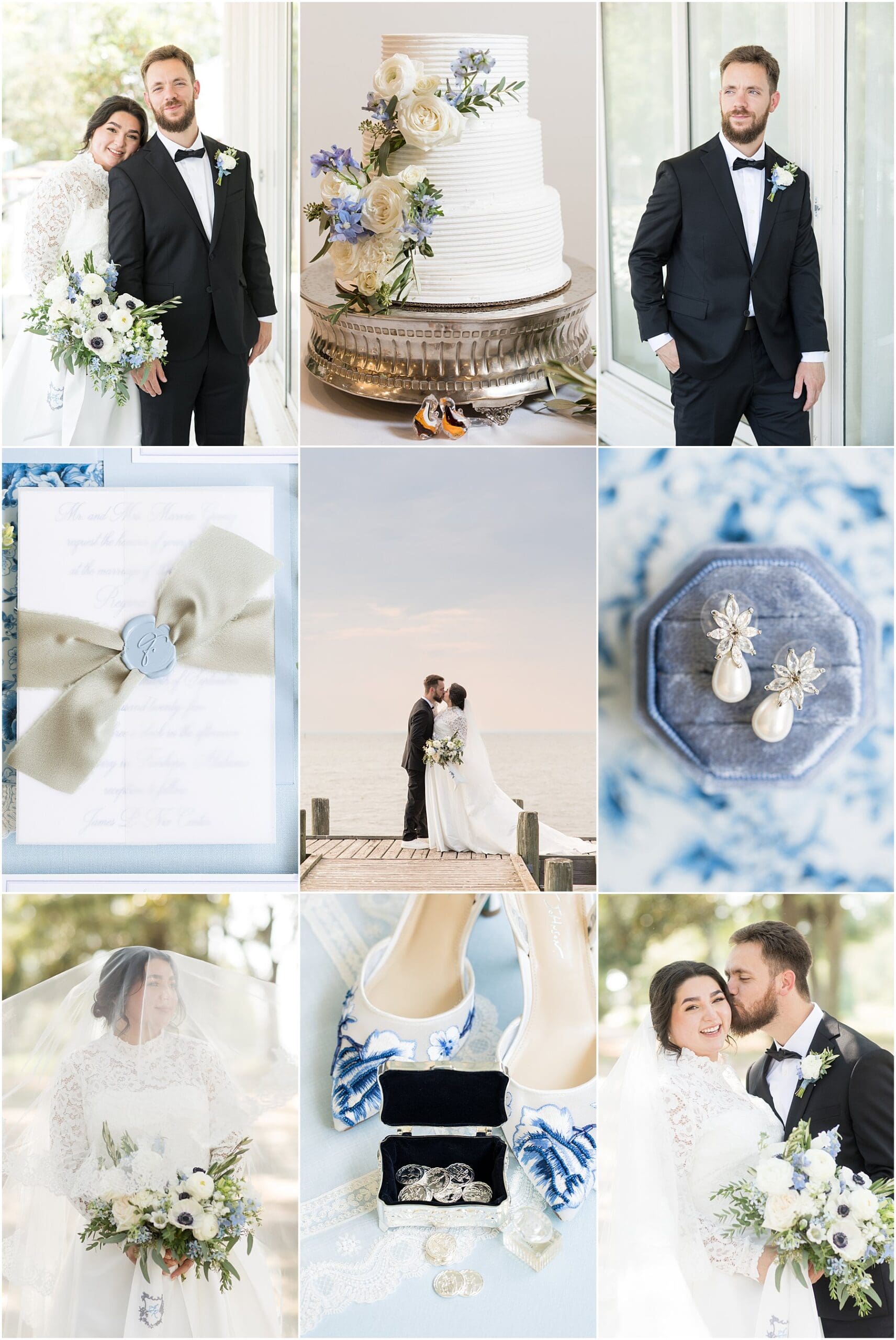
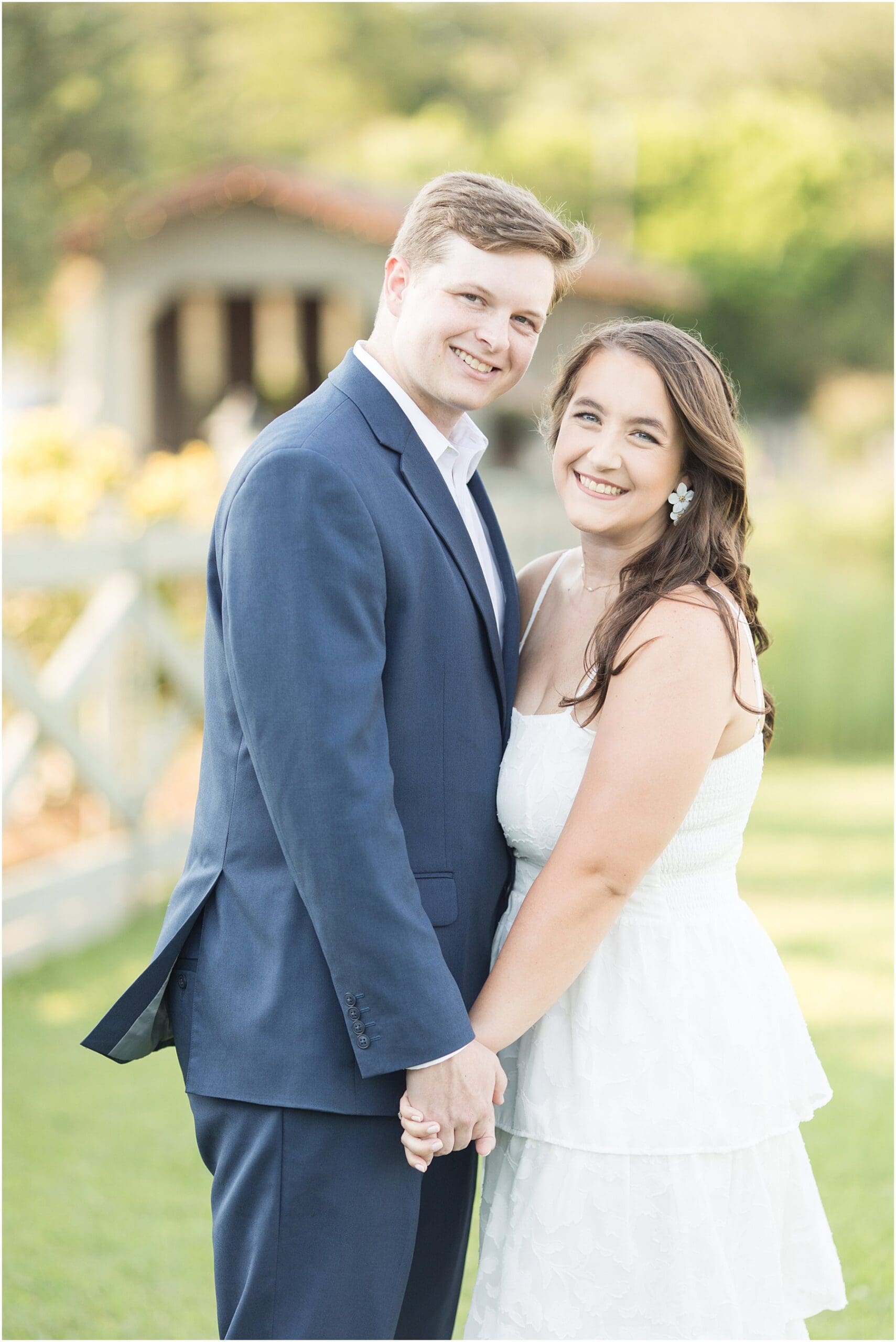
add a comment
+ COMMENTS